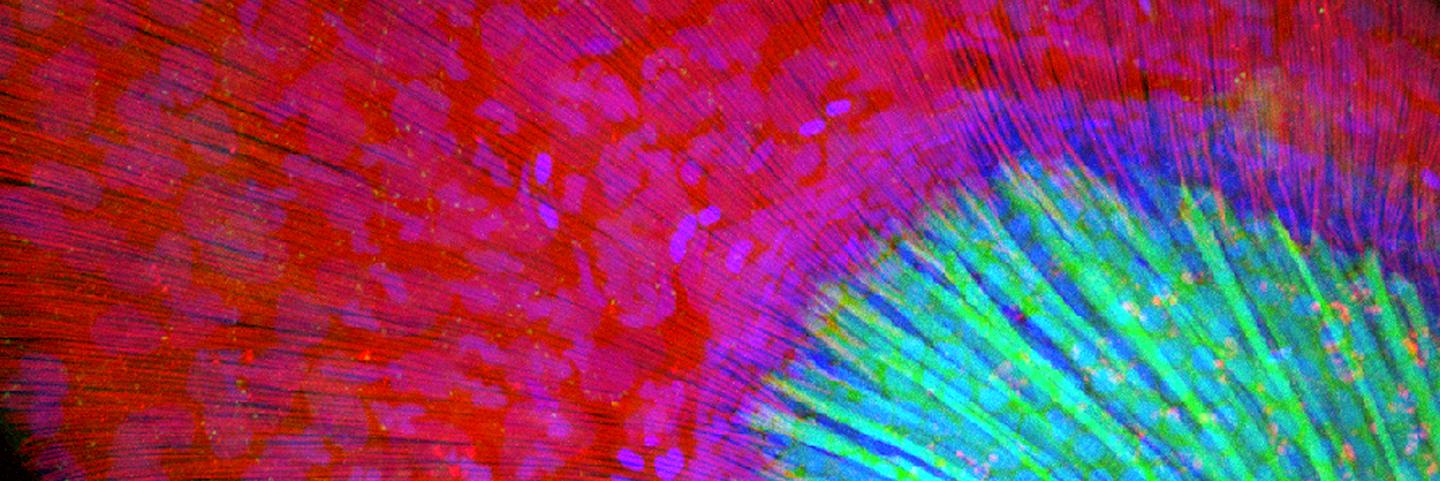
American Society for Cell Biology
@ASCBiology
Inclusive, international community of life scientists. Home to @MBoCjournal @CBELifescied.
This week, ASCB CEO Rebecca Alvania spoke at the @FASEBorg Cytoskeletal Structure, Dynamics, and Function conference, sharing her career journey from scientist to society leader and insights on shaping the future of science. events.faseb.org/event/2d2060c7…

🔬 Getting cytokinesis right matters. @dartmouth’s James Moseley finds that PP2A-B56 regulates Mid1 levels in fission yeast—keeping cell division centered and controlled. 🔍 Read: molbiolcell.org/doi/10.1091/mb… #ASCB #CellBiology
🧠 How do neurons know where to go? @UToledo’s Guofa Liu reveals how MYC regulates the miR-92–Robo1 pathway to guide axons across the spinal cord midline—shedding light on neural wiring logic. 🔍 Read: molbiolcell.org/doi/10.1091/mb… #ASCB #CellBiology
How do gut cells turn your meal into hormones? @MayoClinic Arthur Beyder reviews how rare enteroendocrine cells use Ca²⁺–cAMP signaling to release serotonin, GLP‑1, PYY & more—plus a roundup of exciting new tools for tracking these signals. molbiolcell.org/doi/10.1091/mb… #ASCB

Fission yeast with swapped tubulin genes grew normally but couldn’t complete meiosis—tiny amino‑acid differences matter! Study led by the UPenn lab of Anna Kashina @UPenn 👉 molbiolcell.org/doi/10.1091/mb…

Get recognized—and funded—with #ASCB membership: 🏆 Awards with cash prizes for all career stages 🌍 Outreach and travel grants ✈️ Funding to attend Cell Bio–An ASCB|EMBO Meeting ✨ Chance to be featured in our Member Spotlight Join today! ascb.org/membership/ #CellBiology
Ever wonder how cancer cells end up with too many centrioles? A Seoul National University study finds that during M-phase, low PCM protein levels plus PLK4 activity drive supernumerary centriole formation. By Kunsoo Rhee 👉 molbiolcell.org/doi/10.1091/mb… #ASCB #CellbBiology

Tired of juggling imaging components? Colorado State University’s Tim Stasevich simplifies single-mRNA translation tracking with the new “APP” plasmid system—just two plasmids to visualize in living cells. 👉 molbiolcell.org/doi/10.1091/mb… @ColoradoStateU #ASCB #CellBiology

Targeted FAK & PYK2 gene loss in blood vessel cells → p53 activation → no tumor growth. But drug inhibition? Not enough. Fascinating study from @UCSanDiego’s David Schlaepfer: molbiolcell.org/doi/10.1091/mb…

Juha Saarikangas (University of Helsinki) developed a dual reporter system to track amino acid sensing in yeast. Findings show how GAAC, TORC1 & SPS pathways interact across environments—key for colony viability. 🔬 molbiolcell.org/doi/10.1091/mb… #ASCB #CellBiology
ASCB and others filed a new brief opposing NIH’s request to pause a court ruling that protects early-career scientist grants. The original ruling struck down NIH’s termination of those grants. Read the brief: ascb.org/society-news/u…
Study by Akio Kihara (@HokkaidoUni): Conditional KO of Elovl1 in adult mice reduces acylceramides & protein-bound ceramides, impairing the skin barrier. Water loss increases, lipid lamellae are disrupted, and gene expression shifts. 🧪 molbiolcell.org/doi/10.1091/mb… #ASCB #CellBiology
DYF-5 regulates IFT train turnaround in C. elegans cilia. Loss of DYF-5 disrupts retrograde transport, causing IFT buildup at the tip & affecting kinesin-II. Study by Erwin Peterman (@VUamsterdam): 🔬 molbiolcell.org/doi/10.1091/mb… #ASCB #CellBiology
🚂🧬 How do tiny cellular trains turn around? Using live C. elegans, @VUamsterdam’s Erwin Peterman shows how kinase DYF-5 controls IFT train reversals. Without it? Traffic jams at the ciliary tip. 🔍 Read: molbiolcell.org/doi/10.1091/mb… #ASCB #CellBiology
Speak up for science! Proposed cuts to NIH & NSF threaten critical research. Call your lawmakers—especially if they’re on Appropriations—and urge them to protect funding. Act now: ascb.org/society-news/p…

The "Big Beautiful Bill" isn’t the federal budget—it’s a reconciliation bill focused on tax cuts. The real FY26 funding decisions for NIH, NSF, and more are happening now in Congress. ascb.org/science-policy…
Meet Stentor pyriformis—a giant, single-celled organism with algae roommates and a microtubule “basket.” @UCSF’s Wallace Marshall explores its cell biology & genome, revealing insights into endosymbiosis and eukaryotic evolution. 🔗 molbiolcell.org/doi/10.1091/mb… #ASCB #CellBiology
🧪 TOMORROW: Dr. Emily Mace (@Columbia) leads a FREE ASCB webinar: Arrested Development: Cell Dynamics in Lymphocyte Maturation & Function ➕ Science ➕ Identity ➕ Insight Wed, June 25 | 2PM ET 🔗 ascb.org/ascb-meetings/… #ASCB #CellBiology
👩🔬 Immunology meets identity. June 25 | 2PM ET “Arrested Development” w/ Dr. Emily Mace (@Columbia): • Lymphocyte dynamics • Tissue niches • Her path as an LGBTQ+ scientist Free webinar! 🔗 ascb.org/ascb-meetings/…
How do fast-moving cells know when to let go? 🏃♀️💨 🔬 @sunyoswego’s Yulia Artemenko uncovers a feedback loop between Rap1 & KrsB that may regulate adhesion during rapid amoeboid migration. 🔗 molbiolcell.org/doi/10.1091/mb… #ASCB #CellBiology